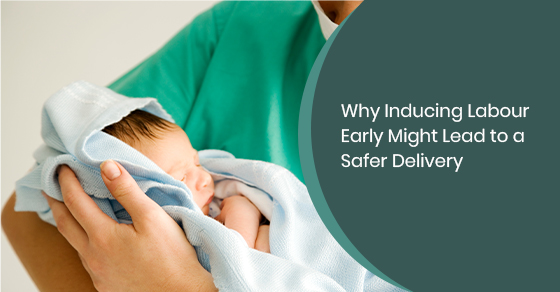Induced labour, or labour induction, refers to the process of giving a pregnant woman medicine or using other methods to stimulate uterine contractions before labour begins naturally. A woman’s labour starts with contractions, which occur on their own. Contractions open or dilate the cervix to prepare the body for the baby’s birth. Medical professionals still do not understand what exactly makes this happen naturally, but it is thought to be triggered by hormones.
There are many different reasons a healthcare provider might recommend inducing labour, and sometimes the risks to a mother and baby make it safer to deliver the baby before the labour can start on its own. However, women who are under their 40th week of pregnancy should not have the option of inducing labour.
One of the biggest reasons for induced labour is the risk of a stillbirth baby. This risk increases as a woman gets older, and women over 35 face an increased risk for these types of complications. This is why it is not unusual for doctors to recommend inducing labour a little early, typically around a week before the due date. For younger women, doctors will wait until about a week after the expected due date before helping induce labour if it has not started on its own.
According to the National Institutes of Health (NIH), inducing labour a week before a mother’s due date can dramatically decrease complication risks and lead to a safer delivery. They found that mothers who induced labour during their 39th week of pregnancy, as opposed to waiting for labour to begin, were a lot less likely to need C-sections. These induced labours also had lower rates of preeclampsia and other labour complications.
The NIH also found that inducing labor during the 39th week did not increase chances of stillbirth and other severe birth injuries compared to mothers who were not induced. There has been a preconceived notion in the medical industry that early induction of labour could lead to higher risks of an emergency C-section, which is the reason many doctors would not induce before the 40th week. However, the NIH’s findings prove otherwise.
During their studies, the NIH found that those mothers who induced in the 39th week of pregnancy had a lower rate of emergency C-sections and lower rates of maternal blood pressure conditions.
Medical Reasons for Induced Labour
Healthcare professionals will always assess several factors when determining if labour induction is the best course of action. This includes the mother’s and baby’s overall health, the baby’s weight and size, the baby’s gestational age, the position of the baby in the uterus, and the status of the mother’s cervix. Other reasons for inducing labour include:
Post-Term Pregnancy
This occurs when an expecting mother goes past two weeks of her due date with labour not naturally starting.
Premature Membrane Rupture
This occurs when a mother’s water breaks and the labour still does not begin.
Chorioamniotis
This is a uterus infection.
Fetal Growth Restrictions
This describes when a baby is less than 10% of their expected weight at their given gestational age.
Oligohydramnios
This happens when there is not enough amniotic fluid surrounding the baby.
Gestational Diabetes
This occurs when an expecting mother’s diabetes develops during her pregnancy.
High Blood Pressure Disorders
High blood pressure disorders associated with pregnancy include preeclampsia, chronic high blood pressure, and gestational hypertension.
Placental Abruption
This occurs when the placenta starts to peel away from the uterine walls, partially or completely.
Other Medical Conditions
This includes other types of conditions like obesity or kidney disease.
Another instance where induced labour is necessary is when a mother lives far away from a hospital. It can be a convenience for expecting mothers who don’t want to risk the chance of an unattended delivery.
Risks of Labour Induction
There are some risks involved with labour induction, which can include:
Failed Induction
There is a 75% chance that first-time mothers will have a successful vaginal delivery during an induced labour. That means that 25% of women will potentially need a C-section.
Low Heart Rate
There are some chances that certain medications used to induce labour could create an excessive amount of contractions. These abnormal contractions can potentially lower a baby’s overall oxygen supply and heart rate.
Infection
There are specific types of labour induction methods like membrane rupture that can lead to an increased risk of infection for the baby and the mother.
Uterine Rupture
A uterine rupture is a rare type of complication, but it can be very serious if it does happen. It occurs when a uterus tears open along a scar line from a uterine surgery or previous C-section. Although it is uncommon, it might require an emergency C-section and potential removal of the mother’s uterus.
Bleeding
An induced labour can lead to higher chances of improper contractions after a child is born. This can lead to bleeding after delivery.
Labour and Delivery Negligence in Toronto
Induced labour has always been a generally safe procedure and sometimes it is absolutely necessary, but like any other medical procedure, there are risks involved. If you or a loved one has experienced labour and delivery negligence, you may be eligible for legal compensation. Call Sommers Roth & Elmaleh at 844-777-7372 or contact us to book a consultation online.

